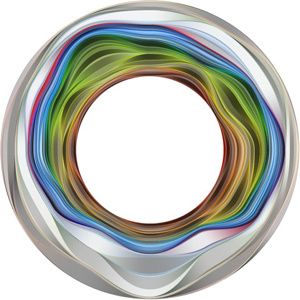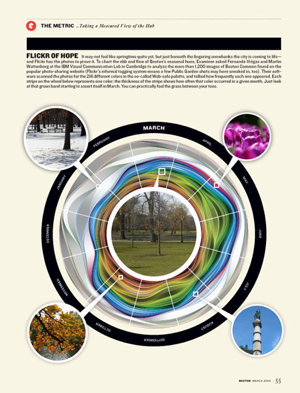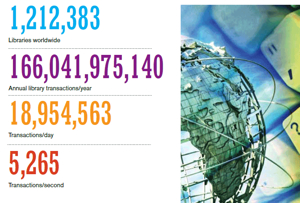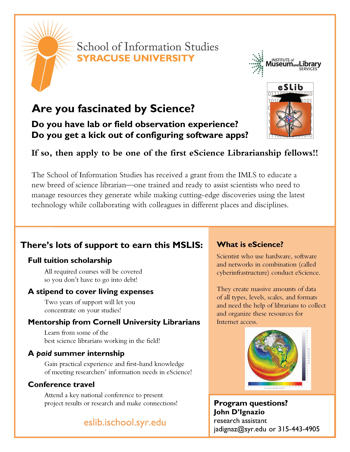The Pew Internet and American Life project is simply an amazing gift to the information world. Here is a great recent slideshow they put out on the myths and realities of teens on the net:
Book Clarification
Sorry for the low content post here, but I’ve had enough comments I need to clarify something. On Monday Marie Radford and I will be talking about our new book Reference Renaissance: Current and Future Trends. This is the book based on the proceedings of the first Reference Renaissance conference held in Denver. This IS NOT the Atlas of New Librarianship (see that blog post here) that is being published by MIT Press and ACRL in March 2011. The Atlas will be all about participatory librarianship (now called new librarianship) and you can get a sense of it from this year’s presentations.
So once again, Reference Renaissance: Current and Future Trends is about reference and is an edited volume available right now.
The Atlas of New Librarianship is about new librarianship (the whole of librarianship) and will be available Spring 2011.
Sorry for the confusion.
More Fun Examples of Information Organization
So after the fun of Pandora to organize music, I thought you might like this example:

Pretty picture you say? Well, how about a couple of thousand. The wheel represents the colors used in Flikr photos over a one year span:

More pictures of white snow in the winter and green grass in the summer. Check out http://hint.fm/projects/flickr/ for more information.
One last little thought…this is an example of how humans (in this case a designer) organizes a huge collection of information, not just some blind algorithm. I love how information organization is seen here as much about art as informing.
Excellent Article on Credibility
So I know this borders on self-promotion (what me – never), but there is an excellent article on credibility and newspapers on the Columbia Journalism Review site at:
http://www.cjr.org/the_news_frontier/trust_falls.php?page=all
I found it because it quotes from my Journal of Documentation piece, but other than that it is a good. Seriously it does a great job of making real some of the points I raise in that article. I think it has a lot of food for thought (the Columbia piece) in terms of librarians acting as authorities versus authoritarians, giving it a reality I could never muster.
Librarians Read?!
Thanks to Joanne Silverstein for the pointer to this article on the Chronicle:
Report Measures Librarians’ Time Reading Job-Related Materials
By Jill Laster
http://chronicle.com/blogPost/Report-Measures-Librarians/21641/?sid=pm&utm_source=pm&utm_medium=en
Does this ring true to you?
Beyond the Bullet Point: Information Organization and Non-Linearity
OK, so I want you to watch this cool video from Pandora. But before you do, a bit about why.
I talk a lot about how how people organize things is unique. How i would put ten books on the shelf, or songs into my play lists, or CD’s in my car, are not necessarily the same way you would. That’s because the way things are related is not prescribed by the things being organized, but by my way of thinking, which is influenced by how I know things. It’s why organizational schema like DDC and LC just aren’t universal. You have to learn them, and even then, it can be VERY confusing.
Furthermore it is the relationship between items that is as if not more important than the way we describe things themselves. So the fact that Mt. Everest is 29,029 feet tall only takes on real meaning when related to the fact that the plane I am using to fly over it only goes up to 29,000 feet. This is why keywords and tags are so problematic…they lack connective tissue.
These ideas are behind things like Scapes and Reference Extract and play a big role in the whole New Librarianship thing. It is also why I say we should scrap catalogs and start fresh not with inventory systems, but with knowledge discovery and building systems.
Anyway, the video. I’m always looking for good examples of this sort of organziationa nd discovery by relation. I think Pandora has done a brilliant job:
By the way, this is also an excellent example of why cataloging is not the ony way to organize information. These are the kind of tools and connections that librarians should be making…or at the very least aware of. Imagine how your music collection might look using these kind of tools. Take all your music, plug it into Pandora and see what kind of recommendations it pops out for your next acquisition.
OCLC Global Scope of Library Activity
Thanks to Stephen Abram for the link to a new OCLC piece:
http://www.oclc.org/uk/en/nextspace/014/librarystatistics.htm


Chart Wars
Here is a great (and short) presentation on the power of visuals and data. Well worth checking out.
Calling all Future Science Librarians
Below you’ll find a link to a flyer for new program getting started at Syracuse University’s iSchool to prepare a new crop of eScience librarians. They are looking to build a cohort of students.
Those selected will get a full ride at SU for the LIS program (including a stipend) as well as mentoring by Cornell science librarians, money for travel, and a paid summer internship.
Take a look!
Sir Ken Robinson: Do schools kill creativity?
A very funny and very insightful talk. I think it has a lot to say about how we need to change LIS education. Also, frighteningly true about professors.

